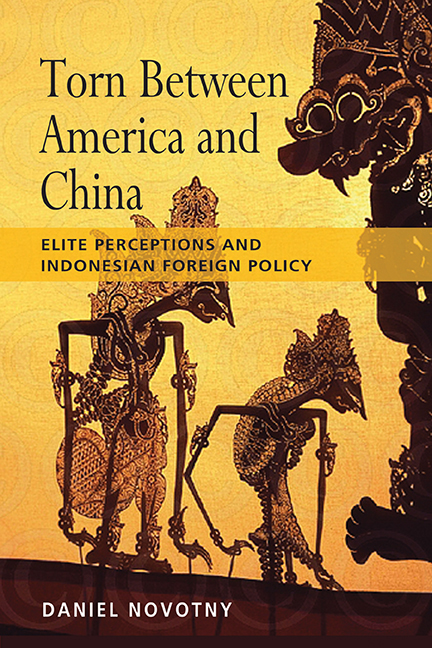Book contents
- Frontmatter
- Dedication
- Contents
- Foreword
- Preface
- List of Figures
- Acknowledgements
- PART I THE CONTEXT
- 1 Introduction
- 2 The Power of Perceptions
- 3 The Foreign Policy Elite and Indonesia's National Interest
- PART II THE PERCEPTIONS “ANTARA DUA KARANG”
- PART III ELITE CONSENSUS AND POLICY OUTCOMES
- Glossary
- Abbreviations
- Bibliography
- Index
- Note on the Author
2 - The Power of Perceptions
from PART I - THE CONTEXT
Published online by Cambridge University Press: 21 October 2015
- Frontmatter
- Dedication
- Contents
- Foreword
- Preface
- List of Figures
- Acknowledgements
- PART I THE CONTEXT
- 1 Introduction
- 2 The Power of Perceptions
- 3 The Foreign Policy Elite and Indonesia's National Interest
- PART II THE PERCEPTIONS “ANTARA DUA KARANG”
- PART III ELITE CONSENSUS AND POLICY OUTCOMES
- Glossary
- Abbreviations
- Bibliography
- Index
- Note on the Author
Summary
INTRODUCTION
In this chapter, we are going to establish the theoretical and conceptual framework underpinning the study. The text introduces the balance-of-threat theory, outlines its main attributes and explains why it is a useful analytical tool for understanding the dynamics of Indonesian foreign policy. The discussion is carried out in the context of, first, the debate over the utility of Western-designed international relations theories in explaining dynamics of interstate relations in Asia and, second, the polemics over the virtues of a particular analytical approach to the exclusion of others — here the chapter points out limitations of the realist theory and the balance-of-power concept.
There have been a number of books that look at how domestic factors have influenced Indonesia's role in international affairs. Studies examining Indonesian foreign policy in the Sukarno and Suharto era were dominated by a leader-centric approach that emphasized the important foreign policy roles of these two leaders. This approach was sensible because both Sukarno and Suharto as ironhanded leaders exercised control and overriding influence over the foreign policy-making process and thus virtually dictated the foreign policy orientation. Yet, for much of the post-WWII period up to the 1990s, these studies offered, by and large, mostly a narrative, descriptive and atheoretical account of how Jakarta's foreign policy was designed and influenced by some domestic considerations. The limitation of these texts stems from their failure to use a theoretical framework to organize and assess empirical findings. Only very few studies of Indonesia, or non-Western countries generally, employ a systematic approach within a theoretical framework to explain the correlation between external and internal and between material and non-material factors, and the process in which these shape their foreign relations.
Not only scholars, in general, but also some foreign diplomats posted in Indonesia seem to find it difficult to establish a sort of “road map” by which to comprehend the pattern of foreign relations of this “big amorphous mass”.
- Type
- Chapter
- Information
- Torn between America and ChinaElite Perceptions and Indonesian Foreign Policy, pp. 16 - 60Publisher: ISEAS–Yusof Ishak InstitutePrint publication year: 2010

